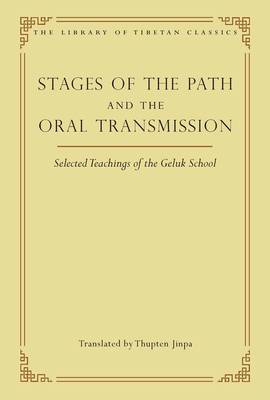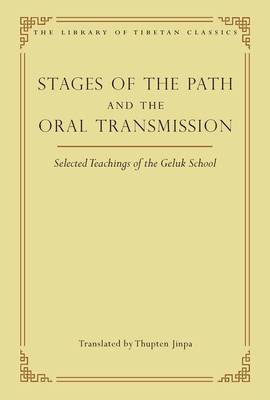
- Afhalen na 1 uur in een winkel met voorraad
- Gratis thuislevering in België vanaf € 30
- Ruim aanbod met 7 miljoen producten
- Afhalen na 1 uur in een winkel met voorraad
- Gratis thuislevering in België vanaf € 30
- Ruim aanbod met 7 miljoen producten
Zoeken
Stages of the Path and the Oral Transmission
Selected Teachings of the Geluk School
€ 97,95
+ 195 punten
Uitvoering
Omschrijving
A major contribution to the literature on Buddhist practice according to the Geluk school of Tibetan Buddhism from its foremost interpreter. Although it was the last major school to emerge in the Tibetan Buddhist tradition, the Geluk school has left an indelible mark on Buddhist thought and practice. The intellectual and spiritual brilliance of its founder, the great Tsongkhapa (1357-1419), has inspired generations of scholars and tantric yogis to place him at the heart of their daily meditative practice. The Geluk tradition's close ties to the Dalai Lamas have also afforded it an outsized influence in all aspects of Tibetan life for centuries. At its peak its combined monasteries boasted a population in the tens of thousands, and its sway encompassed the religious landscape of Mongolia and much of Central Asia. This widespread religious activity fostered a rich literary tradition, and fifteen seminal works are featured here representing four genres of that tradition. They include works on the stages of the path, or lamrim, the genre for which the Geluk is most renowned; works on guru yoga, centered around the core Geluk ritual Offering to the Guru (Lama Chöpa); teachings from the unique oral transmission of Geluk mahamudra, meditation on the nature of mind; and instructions on the three essential points--what to practice in life, at death, and in the bardo. Your guide to these riches, Thupten Jinpa, maps out their historical context and spiritual significance in his extensive introduction.
Specificaties
Betrokkenen
- Uitgeverij:
Inhoud
- Aantal bladzijden:
- 936
- Taal:
- Engels
- Reeks:
- Reeksnummer:
- nr. 6
Eigenschappen
- Productcode (EAN):
- 9780861714452
- Verschijningsdatum:
- 20/12/2022
- Uitvoering:
- Hardcover
- Formaat:
- Genaaid
- Afmetingen:
- 170 mm x 226 mm
- Gewicht:
- 1360 g

Alleen bij Standaard Boekhandel
+ 195 punten op je klantenkaart van Standaard Boekhandel
Beoordelingen
We publiceren alleen reviews die voldoen aan de voorwaarden voor reviews. Bekijk onze voorwaarden voor reviews.










